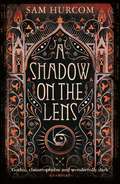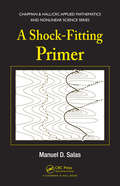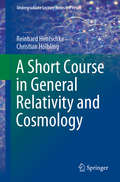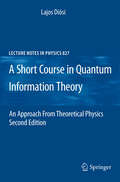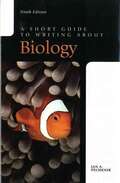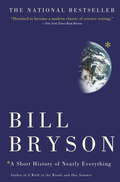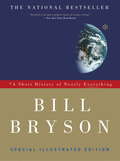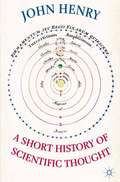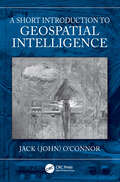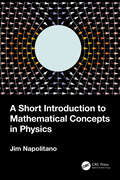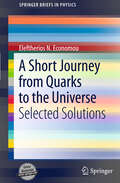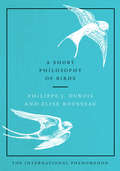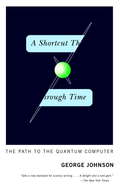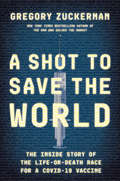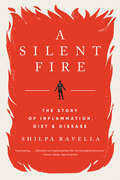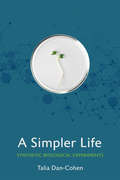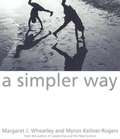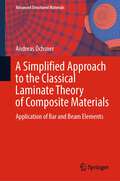- Table View
- List View
A Shadow on the Lens: The most Gothic, claustrophobic, wonderfully dark thriller to grip you this year
by Sam Hurcom'Gothic, claustrophobic and wonderfully dark' GUARDIAN1904. Thomas Bexley, one of the first forensic photographers, is called to the sleepy Welsh village of Dinas Powys. A yound girl by the name of Betsan Tilny has been found murdered in the woodland. But the crime scene appears staged and worse still: the locals are reluctant to help.One night, he develops the crime scene photographs in the cellar of his lodgings. There, he finds a face dimly visible in the photographs - the shadowed spectre of Betsan Tilny.In the days that follow, Thomas senses a growing presence watching him as he tries to uncover what the villagers of Dinas Powys are so intent on keeping secret...The stifling, atmospheric, gothic crime novel following one of the world's first forensic photographers and featuring a killer twist - perfect for fans of The Woman in Black, The Silent Companions, and Little Strangers.****************Praise for A Shadow on the Lens:'An intriguing debut' THE TIMES'A promising debut - gothic, claustrophobic and wonderfully dark' GUARDIAN'A sparkling debut from a name to watch...You might as well be in another world. This is top notch historical crime fiction, with a dash of the supernatural. A gorgeous book and a riveting tale' David Young
A Shock-Fitting Primer (Chapman & Hall/CRC Applied Mathematics & Nonlinear Science)
by Manuel D. SalasA defining feature of nonlinear hyperbolic equations is the occurrence of shock waves. While the popular shock-capturing methods are easy to implement, shock-fitting techniques provide the most accurate results. A Shock-Fitting Primer presents the proper numerical treatment of shock waves and other discontinuities. The book begins by recounting the events that lead to our understanding of the theory of shock waves and the early developments related to their computation. After presenting the main shock-fitting ideas in the context of a simple scalar equation, the author applies Colombeau’s theory of generalized functions to the Euler equations to demonstrate how the theory recovers well-known results and to provide an in-depth understanding of the nature of jump conditions. He then extends the shock-fitting concepts previously discussed to the one-dimensional and quasi-one-dimensional Euler equations as well as two-dimensional flows. The final chapter explores existing and future developments in shock-fitting methods within the framework of unstructured grid methods.Throughout the text, the techniques developed are illustrated with numerous examples of varying complexity. On the accompanying downloadable resources, MATLAB® codes serve as concrete examples of how to implement the ideas discussed in the book.
A Short Bright Flash: Augustin Fresnel and the Birth of the Modern Lighthouse
by Theresa Levitt"Combin[es] matters of biography, science, engineering, technology, art, history, economics and politics seemingly effortlessly and definitely seamlessly. An excellent book and a joy to read."--Henry Petroski, Wall Street Journal Augustin Fresnel (1788-1827) shocked the scientific elite with his unique understanding of the physics of light. The lens he invented was a brilliant feat of engineering that made lighthouses blaze many times brighter, farther, and more efficiently. Battling the establishment, his own poor health, and the limited technology of the time, Fresnel was able to achieve his goal of illuminating the entire French coast. At first, the British sought to outdo the new Fresnel-equipped lighthouses as a matter of national pride. Americans, too, resisted abandoning their primitive lamps, but the superiority of the Fresnel lens could not be denied for long. Soon, from Dunkirk to Saigon, shores were brightened with it. The Fresnel legacy played an important role in geopolitical events, including the American Civil War. No sooner were Fresnel lenses finally installed along U.S. shores than they were drafted: the Union blockaded the Confederate coast; the Confederacy set about thwarting it by dismantling and hiding or destroying the powerful new lights. Levitt's scientific and historical account, rich in anecdote and personality, brings to life the fascinating untold story of Augustin Fresnel and his powerful invention.
A Short Course in General Relativity and Cosmology (Undergraduate Lecture Notes in Physics)
by Reinhard Hentschke Christian HölblingUnlike most traditional introductory textbooks on relativity and cosmology that answer questions like “Does accelerated expansion pull our bodies apart?”, “Does the presence of dark matter affect the classical tests of general relativity?” in a qualitative manner, the present text is intended as a foundation, enabling students to read and understand the textbooks and many of the scientific papers on the subject. And, above all, the readers are taught and encouraged to do their own calculations, check the numbers and answer the above and other questions regarding the most exciting discoveries and theoretical developments in general relativistic cosmology, which have occurred since the early 1980s. In comparison to these intellectual benefits the text is short. In fact, its brevity without neglect of scope or mathematical accessibility of key points is rather unique. The authors connect the necessary mathematical concepts and their reward, i.e. the understanding of an important piece of modern physics, along the shortest path.The unavoidable mathematical concepts and tools are presented in as straightforward manner as possible. Even though the mathematics is not very difficult, it certainly is beneficial to know some statistical thermodynamics as well as some quantum mechanics. Thus the text is suitable for the upper undergraduate curriculum.
A Short Course in Quantum Information Theory: An Approach From Theoretical Physics (Lecture Notes in Physics #827)
by Lajos DiosiThis short and concise primer takes the vantage point of theoretical physics and the unity of physics. It sets out to strip the burgeoning field of quantum information science to its basics by linking it to universal concepts in physics. An extensive lecture rather than a comprehensive textbook, this volume is based on courses delivered over several years to advanced undergraduate and beginning graduate students, but essentially it addresses anyone with a working knowledge of basic quantum physics. Readers will find these lectures a most adequate entry point for theoretical studies in this field. For the second edition, the authors has succeeded in adding many new topics while sticking to the conciseness of the overall approach. A new chapter on qubit thermodynamics has been added, while new sections and subsections have been incorporated in various chapter to deal with weak and time-continuous measurements, period-finding quantum algorithms and quantum error corrections. From the reviews of the first edition: "The best things about this book are its brevity and clarity. In around 100 pages it provides a tutorial introduction to quantum information theory, including problems and solutions. ... it's worth a look if you want to quickly get up to speed with the language and central concepts of quantum information theory, including the background classical information theory." (Craig Savage, Australian Physics, Vol. 44 (2), 2007)
A Short Guide to Clinical Pharmacokinetics
by Krishnaveni Manubolu Raveesha Peeriga K. B. ChandrasekharThis book is a complete resource on pharmacokinetics, pharmacodynamics and pharmacogenomics in clinical practice. It consists of seven chapters that cover various aspects of pharmacokinetics and its clinical applications. The chapters are structured to provide clear objectives and keywords are bolded throughout the text to facilitate understanding. The topics covered include the significance of pharmacokinetics in clinical practice, factors affecting pharmacokinetic parameters, pharmacokinetic drug interactions, therapeutic drug monitoring, dosage adjustment in different population groups, the influence of hepatic diseases on pharmacokinetics and the impact of pharmacogenomics on pharmacokinetics and pharmacodynamics. The book is written in simple language to make the concepts accessible to all readers. This book is a comprehensive resource for students pursuing a doctoral degree in pharmacy, as well as academicians and researchers in clinical pharmacokinetics.
A Short Guide to Writing About Biology
by Jan PechenikThis best-selling writing guide teaches students to think as biologists and to express ideas clearly and concisely through their writing.
A Short History of Circuits and Systems (River Publishers Rapids Series in Electronic Materials, Circuits and Devices)
by Franco Maloberti Anthony C. Davies Myung Hoon Sunwoo Yongfu Li Fidel Makatia Hanho Lee Fakhrul Zaman RokhaniAfter an overview of major scientific discoveries of the 18th and 19th centuries, which created electrical science as we know and understand it and led to its useful applications in energy conversion, transmission, manufacturing industry and communications, this Circuits and Systems History book fills a gap in published literature by providing a record of the many outstanding scientists, mathematicians and engineers who laid the foundations of Circuit Theory and Filter Design from the mid-20th Century. Additionally, the book records the history of the IEEE Circuits and Systems Society from its origins as the small Circuit Theory Group of the Institute of Radio Engineers (IRE), which merged with the American Institute of Electrical Engineers (AIEE) to form IEEE in 1963, to the large and broad-coverage worldwide IEEE Society which it is today.This second edition, commemorating the 75th anniversary of the Circuits and Systems Society, builds upon the first edition's success by expanding the scope of specific chapters, introducing new topics of relevance, and integrating feedback from readers and experts in the field, reflecting the evolving landscape of Circuits and Systems alongside the evolution of the professional society.Many authors from many countries contributed to the creation of this book, working to a very tight time schedule. The result is a substantial contribution to their enthusiasm and expertise, which it is hoped readers will find both interesting and useful. It is certain that in such a book, omission will be found, and in the space and time available, much valuable material had to be left out. It is hoped that this book will stimulate an interest in the marvelous heritage and contributions of the many outstanding people who worked in the Circuits and Systems area.
A Short History of Nearly Everything (Bryson Ser. #5)
by Bill BrysonOne of the world’s most beloved and bestselling writers takes his ultimate journey -- into the most intriguing and intractable questions that science seeks to answer.In A Walk in the Woods, Bill Bryson trekked the Appalachian Trail -- well, most of it. In In A Sunburned Country, he confronted some of the most lethal wildlife Australia has to offer. Now, in his biggest book, he confronts his greatest challenge: to understand -- and, if possible, answer -- the oldest, biggest questions we have posed about the universe and ourselves. Taking as territory everything from the Big Bang to the rise of civilization, Bryson seeks to understand how we got from there being nothing at all to there being us. To that end, he has attached himself to a host of the world’s most advanced (and often obsessed) archaeologists, anthropologists, and mathematicians, travelling to their offices, laboratories, and field camps. He has read (or tried to read) their books, pestered them with questions, apprenticed himself to their powerful minds. A Short History of Nearly Everything is the record of this quest, and it is a sometimes profound, sometimes funny, and always supremely clear and entertaining adventure in the realms of human knowledge, as only Bill Bryson can render it. Science has never been more involving or entertaining.From the Hardcover edition.
A Short History of Nearly Everything (Bryson Ser. #5)
by Bill BrysonOne of the world's most beloved writers and bestselling author of One Summer takes his ultimate journey--into the most intriguing and intractable questions that science seeks to answer.In A Walk in the Woods, Bill Bryson trekked the Appalachian Trail--well, most of it. In A Sunburned Country, he confronted some of the most lethal wildlife Australia has to offer. Now, in his biggest book, he confronts his greatest challenge: to understand--and, if possible, answer--the oldest, biggest questions we have posed about the universe and ourselves. Taking as territory everything from the Big Bang to the rise of civilization, Bryson seeks to understand how we got from there being nothing at all to there being us. To that end, he has attached himself to a host of the world's most advanced (and often obsessed) archaeologists, anthropologists, and mathematicians, travelling to their offices, laboratories, and field camps. He has read (or tried to read) their books, pestered them with questions, apprenticed himself to their powerful minds. A Short History of Nearly Everything is the record of this quest, and it is a sometimes profound, sometimes funny, and always supremely clear and entertaining adventure in the realms of human knowledge, as only Bill Bryson can render it. Science has never been more involving or entertaining.
A Short History of Nearly Everything: Special Illustrated Edition
by Bill BrysonBill Bryson is one of the world's most beloved and bestselling writers. In A Short History of Nearly Everything, he takes his ultimate journey-into the most intriguing and consequential questions that science seeks to answer. It's a dazzling quest, the intellectual odyssey of a lifetime, as this insatiably curious writer attempts to understand everything that has transpired from the Big Bang to the rise of civilization. Or, as the author puts it, "...how we went from there being nothing at all to there being something, and then how a little of that something turned into us, and also what happened in between and since." This is, in short, a tall order.To that end, Bill Bryson apprenticed himself to a host of the world's most profound scientific minds, living and dead. His challenge is to take subjects like geology, chemisty, paleontology, astronomy, and particle physics and see if there isn't some way to render them comprehensible to people, like himself, made bored (or scared) stiff of science by school. His interest is not simply to discover what we know but to find out how we know it. How do we know what is in the center of the earth, thousands of miles beneath the surface? How can we know the extent and the composition of the universe, or what a black hole is? How can we know where the continents were 600 million years ago? How did anyone ever figure these things out?On his travels through space and time, Bill Bryson encounters a splendid gallery of the most fascinating, eccentric, competitive, and foolish personalities ever to ask a hard question. In their company, he undertakes a sometimes profound, sometimes funny, and always supremely clear and entertaining adventure in the realms of human knowledge, as only this superb writer can render it. Science has never been more involving, and the world we inhabit has never been fuller of wonder and delight.From the Hardcover edition.
A Short History of Science to the Nineteenth Century
by Charles SingerDriven by an unquenchable thirst, the human spirit seeks an explanation of the world. In this fascinating study, a noted historian of science traces the course of the ceaseless yearning for answers across two and a half millennia and chronicles, in simple form, the development of the idea of a rational and interconnected material world. This account begins with the earliest recordings of true science among the Ionian Greeks and proceeds to detail the development of unitary systems of thought among Plato, Aristotle, the Stoics, and others. Examinations of the science of imperial Rome ― including Roman mathematics, astronomy, physics, and calendarial science ― give rise to the science of the Middle Ages and the influence of Scholasticism, the rise of humanism, and the reawakened scientific spirit of the early Renaissance. These developments in turn led to the downfall of Aristotelian science in the seventeenth century, the Galilean revolution, Newtonian mathematical physics, and finally, the enthronement of determinism in the eighteenth and nineteenth centuries. Profusely illustrated with maps and diagrams, this comprehensive yet concise volume offers an absorbing, readable history of science up to the dawn of the modern era.
A Short History of Scientific Thought
by John HenryAn essential introductory textbook that shows students how science came to be such an important aspect of modern culture. Lively and readable, it provides a rich historical survey of the major developments in scientific thought, from the Ancient Greeks to the twentieth century. John Henry also explains how new scientific theories have emerged and analyses their impact on contemporary thinking. This is an ideal core text for modules on the History of Science, Medicine and Technology, or the History and Philosophy of Science - or a supplementary text for broader modules on European History or Intellectual History - which may be offered at the upper levels of an undergraduate History, Philosophy or Science degree. In addition it is a crucial resource for students who may be studying the history of science for the first time as part of a taught postgraduate degree in European History, Intellectual History, Science or Philosophy.
A Short Introduction to Geospatial Intelligence
by Jack O'ConnorA Short Introduction to Geospatial Intelligence explains the newest form of intelligence used by governments, commercial organizations, and individuals. Geospatial intelligence combines late 20th century historically derived ways of thinking and early 21st century technologies of GIS, GPS, digital imaging satellites and communications satellites to identify, measure, and analyze the current risk in the world. These ways of thinking have developed from military engineering, cartography, photointerpretation, and imagery analysis. While the oldest example dates back to the early 16th century, all the ways of spatial thinking share the common thread of being developed and refined during conflicts to help military leaders make informed decisions prior to action. In the 21st century— thanks in great part to advances in digital precision technology, miniaturization, and the commercialization of satellites— these ways of thinking have expanded from the military into various other industries and sectors including energy, agriculture, environment, law enforcement, global risk assessment, and climate monitoring. Features: • Analyzes human and algorithmic models for dealing with the challenge of analytic attention, in an age of geospatial data overload • Establishes an original model— envisioning, discovery, recording, comprehending, and tracking— for the spatial thinking that underpins the practice and growth of this emerging discipline • Addresses the effects of small satellites on the collection and analysis of geospatial intelligence A Short Introduction to Geospatial Intelligence describes the development of the five steps in geospatial thinking— envisioning, discovery, recording, comprehending, and tracking— in addition to addressing the challenges, and future applications, of this newest intelligence discipline.
A Short Introduction to Mathematical Concepts in Physics
by Jim NapolitanoMathematics is the language of physics and yet, mathematics is an enormous subject. This textbook provides an accessible and concise introduction to mathematical physics for undergraduate students taking a one semester course. It assumes the reader has studied a year of introductory physics and three semesters of basic calculus, including some vector calculus, but no formal training in differential equations or matrix algebra. It equips readers with the skills and foundational knowledge they need for courses that follow in classical mechanics, electromagnetism, quantum mechanics, and thermal physics. This book exposes students early on to the kinds of mathematical manipulations they will need in upper-level courses in physics. It can also serve as a useful reference for their further studies. Key features: Accompanied by homework problems and a solutions manual for instructors, available upon qualifying course adoption Bridges the gap between calculus and physics, explaining fundamental mathematics (differentiation, integration, infinite series) in physical terms Explores quick extensions into mathematics useful in physics, not typically taught in math courses, including the Gamma Function, hyperbolic functions, Gaussian integrals, Legendre polynomials, functions of a complex variable, and probability distribution functions
A Short Journey from Quarks to the Universe (SpringerBriefs in Physics)
by Eleftherios N. EconomouThis book takes the reader for a short journey over the structures of matter showing that their main properties can be obtained even at a quantitative level with a minimum background knowledge. The latter, besides some high school physics and mathematics, consists of the three cornerstones of science presented in chapters 1 to 3, namely the atomic idea, the wave-particle duality, and the minimization of energy as the condition for equilibrium. Dimensional analysis employing the universal constants and combined with "a little imagination and thinking", to quote Feynman, allows an amazing short-cut derivation of several quantitative results concerning the structures of matter. This book is expected to be of interest to physics, engineering, and other science students and to researchers in physics, material science, chemistry, and engineering who may find stimulating the alternative derivation of several real world results, which sometimes seem to pop out the magician's hat.
A Short Philosophy of Birds
by Philippe J Dubois Elise Rousseau“Brilliant, magical and engrossing–I will never see birds the same way again.” — Peter Wohlleben, author of The Hidden Life of TreesTHE INTERNATIONAL PHENOMENONTwenty-two short lessons from the secret lives of birds on living harmoniously and reconnecting with nature.This charming volume on bird behavior invites us to take a step back from our busy lives and to listen to the tiny philosophers of the sky. From the delicate sparrow to the majestic eagle, birds are among the most fascinating species on earth, and there is much to be learned from these paragons of beauty and grace that can be applied to our lives, including:Independence: what it means to be “pushed out of the nest.”Vulnerability: what the mallard teaches us about giving up our old feathers for new ones in order to fly.Gender equality: what happens when a papa Turtledove sits on the nest.Hierarchy and power: what the raven and the vulture know about the pecking order.Filled with elegant illustrations of bird species, this gem of a book celebrates of our friends in the sky, and what they can teach us about the rhythms of life.
A Short Story of Chemistry
by Isaac AsimovExamines the development of the basic principles of chemistry from the Bronze Age to the present day
A Shortcut Through Time
by George JohnsonThe newest Pentium chip powering PCs and laptops contains 40 million electronic switches packed onto a piece of silicon about the size of a thumbnail. Several years from now, if this incredible shrinking continues, a single chip will hold a billion switches, then a trillion. The logical culmination is a computer in which the switches are so tiny that each consists of an individual atom. At that point something miraculous happens: Quantum mechanics kick in. Anyone who follows the science news or watches 'Star Trek' has at least a notion of what that means: particles can be in two or more places at once. Atoms obey a peculiar logic of their own - and if it can be harnessed society will be transformed. Problems that would now take forever would be solved almost instantly. Quantum computing promises nothing less than a shortcut through time.
A Shot to Save the World: The Inside Story of the Life-or-Death Race for a COVID-19 Vaccine
by Gregory Zuckerman"An inspiring and informative page-turner." –Walter IsaacsonLonglisted for the FT/McKinsey Business Book of the Year Award The authoritative account of the race to produce the vaccines that are saving us all, from the #1 New York Times bestselling author of The Man Who Solved the MarketFew were ready when a mysterious respiratory illness emerged in Wuhan, China in January 2020. Politicians, government officials, business leaders, and public-health professionals were unprepared for the most devastating pandemic in a century. Many of the world&’s biggest drug and vaccine makers were slow to react or couldn&’t muster an effective response. It was up to a small group of unlikely and untested scientists and executives to save civilization. A French businessman dismissed by many as a fabulist. A Turkish immigrant with little virus experience. A quirky Midwesterner obsessed with insect cells. A Boston scientist employing questionable techniques. A British scientist despised by his peers. Far from the limelight, each had spent years developing innovative vaccine approaches. Their work was met with skepticism and scorn. By 2020, these individuals had little proof of progress. Yet they and their colleagues wanted to be the ones to stop the virus holding the world hostage. They scrambled to turn their life&’s work into life-saving vaccines in a matter of months, each gunning to make the big breakthrough—and to beat each other for the glory that a vaccine guaranteed. A #1 New York Times bestselling author and award-winning Wall Street Journal investigative journalist lauded for his &“bravura storytelling&” (Gary Shteyngart) and &“first-rate&” reporting (The New York Times), Zuckerman takes us inside the top-secret laboratories, corporate clashes, and high-stakes government negotiations that led to effective shots. Deeply reported and endlessly gripping, this is a dazzling, blow-by-blow chronicle of the most consequential scientific breakthrough of our time. It&’s a story of courage, genius, and heroism. It&’s also a tale of heated rivalries, unbridled ambitions, crippling insecurities, and unexpected drama. A Shot to Save the World is the story of how science saved the world.
A Silent Fire: The Story Of Inflammation, Diet, And Disease
by Shilpa Ravella“Fascinating.…[Ravella’s writing] breathes life into biological functions.” —Grace Wade, New Scientist A riveting investigation of inflammation—the hidden force at the heart of modern disease—and how we can prevent, treat, or even reverse it. Inflammation is the body’s ancestral response to its greatest threats, the first line of defense it deploys against injury and foreign pathogens. But as the threats we face have evolved, new science is uncovering how inflammation may also turn against us, simmering underneath the surface of leading killers from heart disease and cancer to depression, aging, and mysterious autoimmune conditions. In A Silent Fire, gastroenterologist Shilpa Ravella investigates hidden inflammation’s emerging role as a common root of modern disease—and how we can control it. We meet the visionary nineteenth-century pathologist who laid the foundation for our modern understanding of inflammation, the eccentric Russian zoologist who discovered one of the cells central to our immune system, and the dedicated researchers advancing the frontiers of medical and nutritional science today. With fascinating case studies, Ravella reveals how we can reform our relationships with food and our microbiomes to benefit our own health and the planet’s. Synthesizing medical history, cutting-edge research, and innovative clinical practice, Ravella unveils inflammation as one potential basis for a unifying theory of disease. A paradigm-shifting understanding of one of the most mysterious, buzzed-about topics in medicine and nutrition, A Silent Fire shows us how to live not only long but well.
A Simpler Life: Synthetic Biological Experiments (Expertise: Cultures and Technologies of Knowledge)
by Talia Dan-CohenA Simpler Life approaches the developing field of synthetic biology by focusing on the experimental and institutional lives of practitioners in two labs at Princeton University. It highlights the distance between hyped technoscience and the more plodding and entrenched aspects of academic research. Talia Dan-Cohen follows practitioners as they wrestle with experiments, attempt to publish research findings, and navigate the ins and outs of academic careers. Dan-Cohen foregrounds the practices and rationalities of these pursuits that give both researchers' lives and synthetic life their distinctive contemporary forms. Rather than draw attention to avowed methodology, A Simpler Life investigates some of the more subtle and tectonic practices that bring knowledge, doubt, and technological intervention into new configurations. In so doing, the book sheds light on the more general conditions of contemporary academic technoscience.
A Simpler Way
by Margaret J. Wheatley Myron Kellner-RogersWe want life to be less arduous and more delightful. We want to be able to think differently about how to organize human activities. Our book springs from these desires. It explores a different way of thinking about life and about how organizing might occur. Our primary question is: How could we organize human endeavor if we developed different understandings of how life organizes itself? We ask this question for all of us, for there is no one who is unaffected by the organizations we humans have created.
A Simplified Approach to the Classical Laminate Theory of Composite Materials: Application of Bar and Beam Elements (Advanced Structured Materials #192)
by Andreas ÖchsnerThis book provides a systematic introduction to composite materials, which are obtained by a layer-wise stacking of one-dimensional bar/beam elements. Each layer may have different mechanical properties but each single layer is considered as isotropic. The major idea is to provide a simplified theory to easier understand the classical two-dimensional laminate theory for composites based on laminae with unidirectional fibers. In addition to the elastic behavior, failure is investigated based on the maximum stress, maximum strain, Tsai-Hill, and the Tsai-Wu criteria. Partial differential equations lay the foundation to mathematically describe the mechanical behavior of any classical structural member known in engineering mechanics, including composite materials. The so-called classical laminate theory provides a simplified stress analysis, and a subsequent failure analysis, without the solution of the system of coupled differential equations for the unknown displacements. The procedure provides the solution of a statically indeterminate system based on a generalized stress–strain relationship under consideration of the constitutive relationship and the definition of the so-called stress resultants. This laminate theory is typically provided for two-dimensional plane problems, where the basic structural element is a simple superposition of a classical plane elasticity element with a thin plate element under the consideration of an orthotropic constitutive law. This two-dimensional approach and the underlying advanced continuum mechanical modeling might be very challenging for some students, particularly at universities of applied sciences. Thus, a reduced approach, the so-called simplified classical laminate theory, has been developed. The idea is to use solely isotropic one-dimensional elements, i.e., a superposition of bar and beam elements, to introduce the major calculation steps of the classical laminate theory. Understanding this simplified theory is much easier and the final step it to highlight the differences when moving to the general two-dimensional case.
A Simplified Approach to the Classical Laminate Theory of Composite Materials: Application of Bar and Beam Elements (Advanced Structured Materials #242)
by Andreas ÖchsnerThis book provides a systematic introduction to composite materials, which are obtained by a layer-wise stacking of one-dimensional bar/beam elements. Each layer may have different mechanical properties, but each single layer is considered as isotropic. The major idea is to provide a simplified theory to easily understand the classical two-dimensional laminate theory for composites based on laminae with unidirectional fibers. In addition to the elastic behavior, failure is investigated based on the maximum stress, maximum strain, Tsai-Hill, and the Tsai-Wu criteria. Partial differential equations lay the foundation to mathematically describe the mechanical behavior of any classical structural member known in engineering mechanics, including composite materials. The so-called classical laminate theory provides a simplified stress analysis, and a subsequent failure analysis, without the solution of the system of coupled differential equations for the unknown displacements. The procedure provides the solution of a statically indeterminate system based on a generalized stress–strain relationship under consideration of the constitutive relationship and the definition of the so-called stress resultants. This laminate theory is typically provided for two-dimensional plane problems, where the basic structural element is a simple superposition of a classical plane elasticity element with a thin plate element under the consideration of an orthotropic constitutive law. This two-dimensional approach and the underlying advanced continuum mechanical modeling might be very challenging for some students, particularly at universities of applied sciences. Thus, a reduced approach, the so-called simplified classical laminate theory, has been developed. The idea is to use solely isotropic one-dimensional elements, i.e., a superposition of bar and beam elements, to introduce the major calculation steps of the classical laminate theory. Understanding this simplified theory is much easier and the final step it to highlight the differences when moving to the general two-dimensional case.
